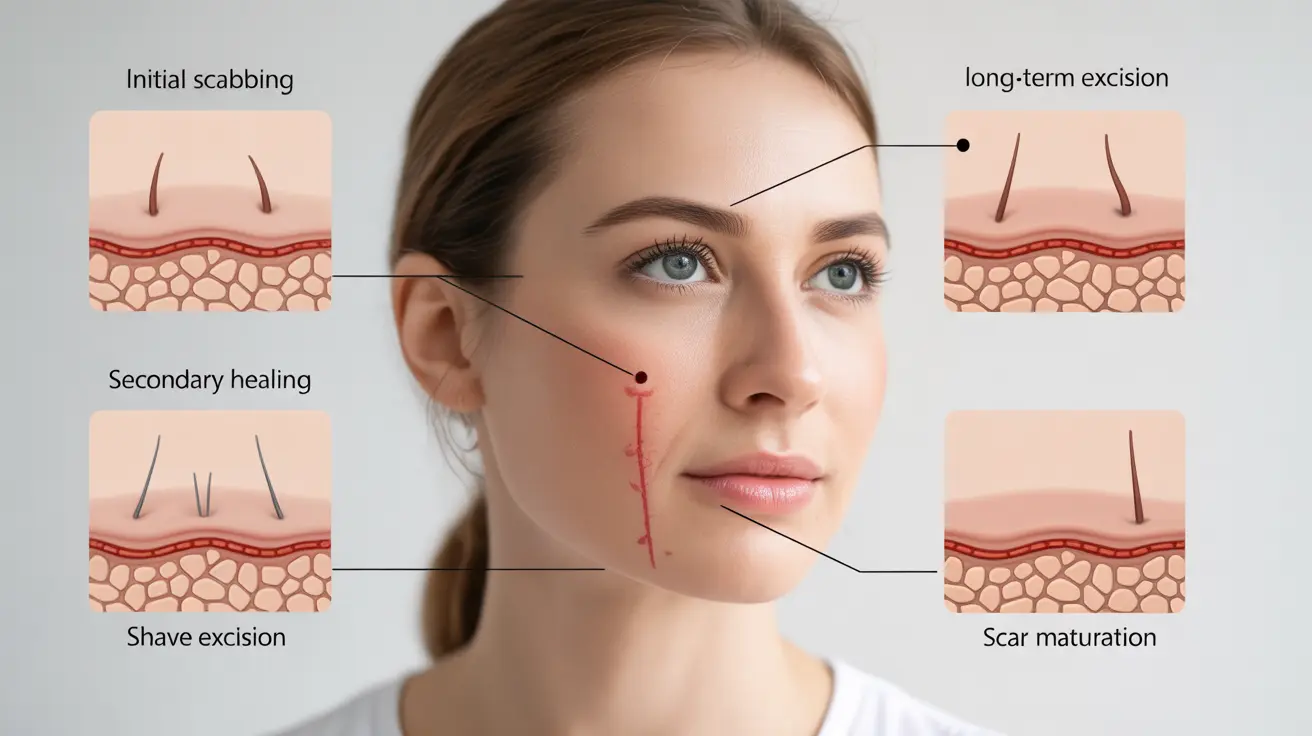Having a mole removed from your face can feel daunting, especially when considering the potential for scarring. Understanding what to expect and knowing how to care for your skin after the procedure can significantly impact your healing journey and the final appearance of any scarring.
This comprehensive guide will walk you through everything you need to know about facial mole removal scars, from initial healing expectations to long-term care strategies for optimal results.
Understanding Facial Mole Removal Methods
The type of scarring you may experience largely depends on the removal method used. Different techniques can result in varying degrees of scarring, making it crucial to discuss your options with a qualified healthcare provider.
Surgical Excision
This traditional method involves cutting out the mole and surrounding skin, then closing the wound with stitches. While it may leave a linear scar, proper technique and aftercare can help minimize its visibility.
Shave Excision
This less invasive technique removes moles that are raised above the skin's surface. It typically results in a smaller, less noticeable scar compared to surgical excision.
Laser Treatment
For some superficial moles, laser treatment might be appropriate. This method often results in minimal scarring and can be particularly suitable for facial moles.
The Healing Timeline
Understanding the typical healing progression can help you set realistic expectations and monitor your recovery effectively.
Initial Healing Phase (1-2 Weeks)
During this period, the wound will form a scab and may appear red or pink. It's crucial to follow your doctor's wound care instructions carefully during this time.
Secondary Healing Phase (2-8 Weeks)
The initial scab will fall off, revealing new skin underneath. The scar may appear pink or red and might be slightly raised.
Long-term Healing (Several Months)
Over time, the scar will continue to fade and flatten. The final appearance can take up to a year to develop fully.
Minimizing Scar Appearance
Immediate Post-Procedure Care
Proper wound care in the days following your procedure is crucial for minimal scarring:
- Keep the area clean and dry
- Apply prescribed ointments as directed
- Avoid picking at scabs
- Protect the area from direct sunlight
- Follow all post-procedure instructions carefully
Long-term Scar Management
Several treatments can help improve the appearance of existing scars:
- Silicone sheets or gels
- Topical vitamin E and other scar-reducing products
- Sunscreen application to prevent discoloration
- Professional treatments like microneedling or laser therapy
Frequently Asked Questions
What can I expect the scar to look like after mole removal on my face? Initially, the scar will be red or pink and may be slightly raised. Over time, it typically fades to a lighter color and becomes flatter. The final appearance depends on factors like the removal method, location, and your skin type.
How long does it typically take for a mole removal scar on the face to heal and fade? The initial healing takes 1-2 weeks, but complete scar maturation can take 6-12 months. During this time, the scar will gradually become lighter and less noticeable.
What mole removal methods cause the least scarring on the face? Laser treatment and shave excision typically result in minimal scarring. However, the best method depends on your specific mole's characteristics and location.
How can I care for my mole removal wound to minimize facial scarring? Keep the wound clean, apply prescribed ointments, avoid sun exposure, and follow your doctor's specific aftercare instructions. Don't pick at scabs, and keep the area moisturized as directed.
Are there treatments to reduce or improve the appearance of scars after mole removal on the face? Yes, treatments include silicone sheets/gels, topical scar treatments, professional procedures like microneedling, and laser therapy. Consult with your healthcare provider to determine the most appropriate options for your specific case.




